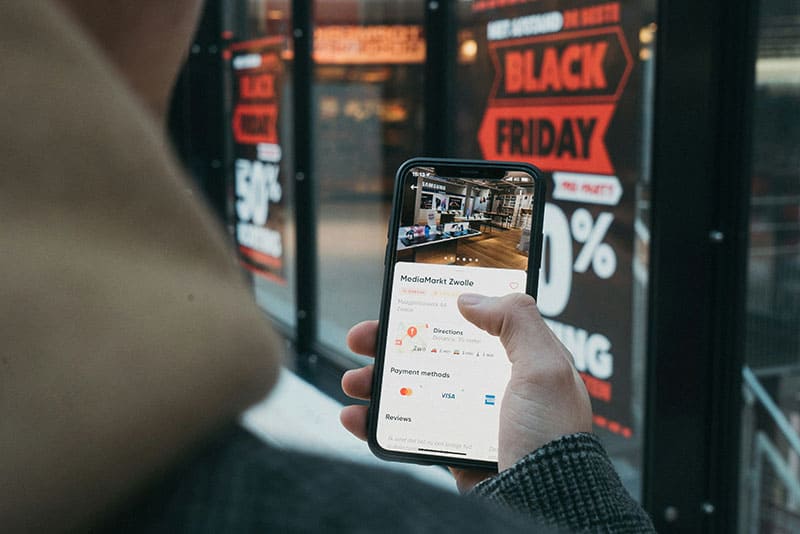In the highly competitive world of retail, the store is quite literally your foundation for success. Retail construction is the vital process of bringing the retail store to life. From the earliest stages of designing a space to the final stages of construction and opening, every step of the process is critical.
Retail construction has evolved over the years, responding to changes in how people shop and what they expect from retail spaces. In this blog post, we will explore the evolution of retail construction and what it truly means for retailers today.
Designing for Experience
In today’s retail landscape, it’s no longer solely about creating a functional space to display and sell merchandise. To maintain and even increase foot traffic, retailers have shifted focus from merely selling products to creating immersive and memorable experiences for customers. The design of retail spaces has evolved significantly to meet this changing consumer demand.
The goal now is to engage customers on a deeper level, forging emotional connections and fostering brand loyalty. To this end, retailers are investing in the design of their spaces to create inviting atmospheres, captivating visual displays, and personalized touches that resonate with customers’ emotions.
In response to evolving consumer preferences, smaller physical stores are drawing inspiration from department stores by integrating amenities such as coffee shops and restaurants into their spaces. This strategic approach goes beyond the conventional brick-and-mortar model by enticing customers to linger longer in-store by offering entertainment and pampering alongside their shopping experience.
This trend towards crafting an immersive retail environment reflects a heightened customer desire for more than just fulfilling their shopping needs; they seek to be entertained, engaged, and delighted during their visit.
In addition to providing entertainment and leisure amenities, retailers are also offering a more streamlined shopping option by implementing pick-up counters or services within their premises. This convenient service allows customers to swiftly collect their online purchases or pre-ordered items, enhancing the overall shopping experience by offering both efficiency and convenience.
How Shifts in Shopping Have Changed Retail Construction
From the rise of shopping malls, big box stores, and outdoor shopping centers to the era of online shopping, the retail environment continues to evolve. To stay relevant, brick-and-mortar stores must adapt to meet the changing needs and expectations of modern consumers. The integration of e-commerce within the retail experience has led to a reevaluation of store layouts, designs, and functionalities to align with the new demands of tech-savvy customers. This shift has fueled a need to go the extra mile in designing retail spaces that cater to the digital realm and its customers.
Proprietors are faced with the task of innovating and providing shopping experiences that merge both traditional and online stores effectively. The challenges posed by e-commerce have necessitated a meticulous assessment of all aspects of retailing, from merchandising and inventory management to customer experience and engagement.
Picture This
A specialty coffee shop wants to create a personalized experience for their customers. To enhance engagement and offer convenience, the coffee shop could develop a mobile app that allows customers to shop online and order their favorite beverages, then pick them up at a designated time.
This not only saves customers time but also creates a connection between the online and physical experience. The app could also incorporate a customer loyalty program to reward frequent purchases and provide personalized recommendations based on previous orders.
To further enhance the in-store experience, the coffee shop could employ technology such as digital menu boards or touch-screen kiosks. These interactive displays could provide detailed information about each type of coffee, including origin, flavor notes, and brewing methods. Customers could use these screens to explore different options and make informed choices. The digital displays could also share information about the company’s sustainability practices and the story behind their coffee beans, leading the customer to feel a sense of connection and trust with the brand.
To capitalize on these changing dynamics, retailers require a partner that can respond to their unique needs and deliver solutions with a commitment to quality and attention to detail. Whether it’s creating engaging displays or designing versatile and adaptable spaces that cater to the needs of modern consumers, retail construction projects require a nuanced understanding of the retail environment and its challenges.
Sustainability in Retail
Building design plays a critical role in the creation of sustainable retail spaces. Green buildings are characterized by their commitment to incorporating natural light, renewable energy sources, and other environmentally conscious practices. By maximizing the use of natural light during daylight hours, retailers can reduce their reliance on artificial lighting, resulting in energy savings while creating an inviting, well-lit space for customers.
Sustainable building design also emphasizes the efficient use of resources. Water conservation measures, such as the installation of low-flow plumbing fixtures or the use of rainwater harvesting systems, can significantly reduce water consumption. Implementing insulation technologies and energy-efficient HVAC systems can optimize energy usage and create a comfortable shopping environment.
Retailers who invest in sustainable design create spaces that resonate with environmentally conscious consumers, establishing a positive brand image and fostering customer loyalty. Moreover, the financial advantages are substantial, as energy-efficient buildings generally experience lower operating costs and higher resale values, ensuring a return on investment for retailers in the long term.
Why Asa
As businesses strive to stay current and meet the needs of their customers, they must pay attention to all the details that underlie the creation of successful shopping spaces. This includes elements such as store setup, product configuration, and point-of-purchase displays. Partnering with an established building and design firm with a wealth of expertise in the retail sector can provide your company with the necessary support and know-how to create memorable shopping experiences that provide a competitive edge in a crowded retail market.
Asa Carlton is dedicated to delivering personalized attention and results on a national scale. Our nationwide team works tirelessly to ensure our clients’ needs are met with meticulous attention to detail. Also, we understand the crucial importance of safety and compliance in retail construction, and our focus on quality and consistency means our clients trust us to exceed their expectations.
By leveraging our extensive reach and in-depth knowledge of the retail landscape, we partner with our clients to design and build unique retail spaces that cater to the evolving needs of modern shoppers. Contact us today to find out how Asa Carlton can help you best meet your retail customers’ needs.










